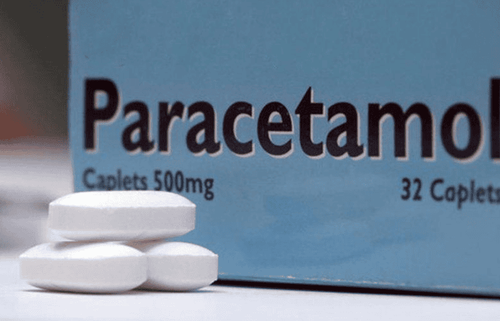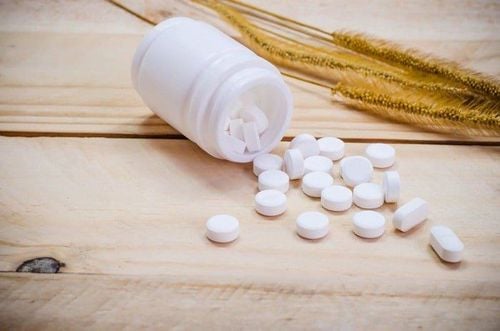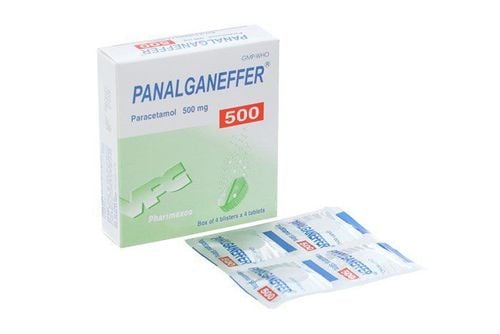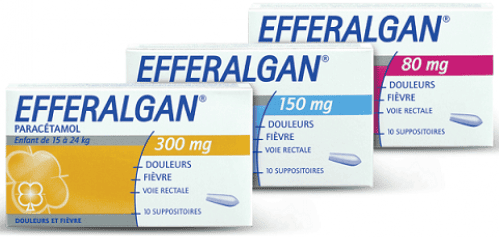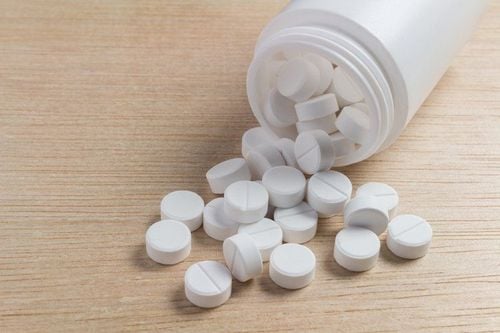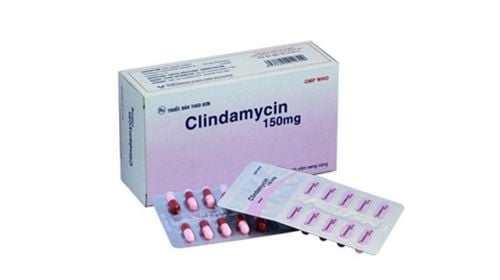This is an automatically translated article.
Paracetamol (acetaminophen) is one of the most commonly used pain relievers worldwide and is widely available by prescription and over-the-counter. Due to the popularity of paracetamol, the drug interactions of paracetamol are also of great concern. So, can paracetamol-containing drugs interact when used with other drugs?1. Overview of drug interactions of paracetamol
Fortunately, only a few clinically significant paracetamol drug interactions have been reported. Patients taking paracetamol may develop hepatotoxicity after overdose of enzyme inducers. There is controversy (due to differences between observational studies and studies in healthy volunteers) about the potential for paracetamol to interact with warfarin, thereby enhancing the anticoagulant effect. On the other hand, no other serious adverse interactions have been confirmed in humans with paracetamol-containing medicinal products at therapeutic doses.Absorption of paracetamol is dependent on gastric emptying, drugs that alter gastric emptying may alter the pharmacokinetics of paracetamol containing drugs, however this will not cause adverse effects. any serious side effects. Although animal experiments have demonstrated that many compounds can modify the hepatotoxicity of paracetamol, these compounds do not appear to be significant at therapeutic doses.
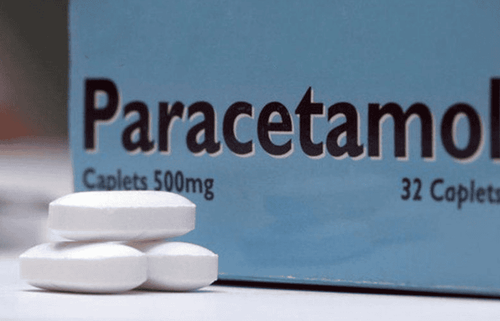
Sự hấp thu của paracetamol phụ thuộc vào việc làm rỗng dạ dày
2. Classification of drug interactions
Serious drug interactions: of high clinical significance, the combination should be avoided because the risks of the interaction outweigh the benefits. Moderate drug interactions: moderate clinical significance, usually avoid combination, only used in special cases. Mild interactions: of minimal clinical significance, to reduce risk careful assessment and consideration of an alternative drug, take steps to avoid risk of interaction and/or plan for monitoring when use. Unknown interaction: no interaction information available. To date, approximately 116 drugs have been identified that are known to interact with Paracetamol (acetaminophen), including 8 serious drug interactions (with hepatotoxic drugs), 73 moderate drug interactions, and 35 drug interactions. mild drug interactions (according to Drugs.com).MORE: Interactions between paracetamol-alcohol and liver problems
3. Serious paracetamol drug interactions
3.1. Ethanol Consult your doctor before using paracetamol together with ethanol (alcohol), which can cause serious side effects affecting your liver. Call your doctor at once if you have fever, chills, joint pain/swelling, extreme tiredness or weakness, unusual bleeding/bruising, skin rash/itching, loss of appetite, nausea, vomiting vomiting, jaundice...Drinking too much alcohol can increase your risk of paracetamol-related liver toxicity, including rare cases of fatal hepatitis and severe liver failure requiring a liver transplant. The proposed mechanism is the induction of liver microsomal enzymes during prolonged alcohol use, which may lead to a faster metabolism of paracetamol and increased production of potentially hepatotoxic metabolites. .
Chronic drinkers should avoid frequent or excessive use of paracetamol. Alternative analgesic and antipyretic therapy may be appropriate in patients who drink 3 or more units of alcohol per day. However, if using paracetamol, these patients should be careful not to exceed the recommended dose (maximum 4g/day in adults and children 12 years of age and older).
3.2. Leflunomide Leflunomide can cause liver problems, and use with medicines that can affect the liver such as paracetamol can increase that risk. Because leflunomide can stay in the blood for a long time after the last dose, interactions with other drugs can occur for some time even after the patient has stopped taking the drug.
Patients should avoid or limit alcohol use while being treated with these drugs. Call your doctor right away if patient has fever, chills, joint pain or swelling, unusual bleeding/bruising, skin rash, itching, loss of appetite, fatigue, nausea, vomiting, abdominal pain , dark urine , pale stools and/or yellowing of the skin or eyes as these can be signs and symptoms of liver damage .
SEE ALSO: Treatment of poisoning with paracetamol pain reliever and fever reducer

Bệnh nhân nên tránh hoặc hạn chế sử dụng rượu khi đang điều trị bằng các loại thuốc này
3.4. Mipomersen Mipomersen can cause liver problems, and use with medicines that can affect the liver such as paracetamol can increase that risk. Patients should avoid or limit alcohol use while being treated with these drugs.
Co-administration of mipomersen with other agents known to cause hepatotoxicity may increase the risk of liver damage. Mipomersen may cause elevation of serum transaminases and hepatic steatosis. Patients should seek medical attention if they experience potential signs and symptoms of hepatotoxicity such as fever, rash, itching, loss of appetite, nausea, vomiting, fatigue, malaise, right upper quadrant pain, watery dark urine, pale stools,...
3.5. Pexidartinib Cases of serious (even fatal) hepatotoxicity have occurred in patients treated with pexidartinib. Therefore, the concomitant use of other potentially hepatotoxic drugs (including paracetamol) may increase the risk of liver damage. The mechanism of hepatotoxicity of pexidartinib is unknown.
The use of pexidartinib with other potentially hepatotoxic drugs should be avoided. Patients treated with pexidartinib should have their liver function tested, including AST, ALT, total bilirubin, direct bilirubin, ALP, and gamma-glutamyl transferase (GGT) before starting pexidartinib, weekly for 8 days. the first week, every 2 weeks for the next month and every 3 months after that.
Pexidartinib therapy may require dose reduction, discontinuation, or permanent discontinuation based on severity of hepatotoxicity.
3.6. Prilocaine Using prilocaine along with paracetamol may increase the risk of methemoglobinemia, a condition that can lead to a lack of oxygen in vital tissues and organs due to a decrease in the blood's ability to carry oxygen.
Children (especially infants and newborns) may be more susceptible to methemoglobinemia during treatment with these drugs or develop anemia, heart or lung diseases, circulatory disorders, fibrosis liver, shock, sepsis and certain genetic predispositions such as NADH cytochrome-b5 reductase deficiency, glucose-6-phosphate dehydrogenase deficiency and hemoglobin M deficiency. may cause methemoglobinemia are used together. Signs and symptoms of methemoglobinemia may be delayed for several hours after treatment with prilocaine. The patient (or caregiver) should seek immediate medical attention if the person develops a grayish appearance in the skin, mouth, or fingernails; nausea; headache; dizzy; lightheadedness; tired; shortness of breath; rapid or shallow breathing; fast heart beat; nervous; worry or confusion.
MORE: Acute poisoning with fever-reducing acetaminophen
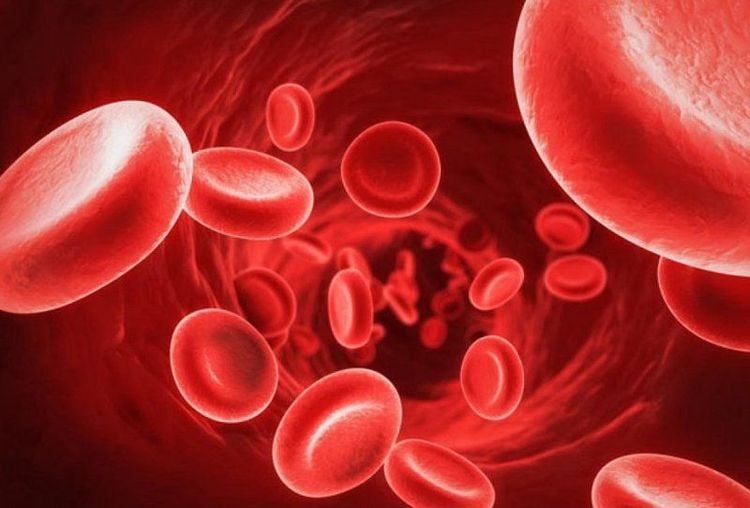
Sử dụng prilocaine cùng với paracetamol có thể làm tăng nguy cơ mắc bệnh methemoglobin huyết, một tình trạng có thể dẫn đến thiếu oxy trong các mô và cơ quan quan trọng do giảm khả năng vận chuyển oxy của máu
Sodium nitrite can form methemoglobin, reducing the blood's ability to carry oxygen. When used with other drugs also associated with methemoglobinemia including: local anesthetics (eg, benzocaine, lidocaine, prilocaine), antimalarials (eg, chloroquine, primaquine, quinine, tafenoquine), nitrates and nitrites, sulfonamides, paracetamol, aminosalicylic acid, dimethyl dapsone sulfoxide, flutamide, metoclopramide (mainly in neonates), nitrofurantoin (mainly in neonates), phenazopyridine, phenobarbital, phenytoin and rasburicase may increase the risk methemoglobin.
Other risk factors that make adverse interactions more likely include: childhood, anemia, heart/lung disease, peripheral vascular disease, shock, sepsis, acidosis, and genetic predisposition ( eg: NADH cytochrome-b5 reductase deficiency; glucose-6-phosphate dehydrogenase deficiency; hemoglobin M).
When sodium nitrite is administered to humans, methemoglobin concentrations as high as 58% have been reported following two doses of 300 mg to adults. There have been reports of methemoglobinemia, coma, and death in patients without life-threatening cyanide poisoning who were treated with sodium nitrite injection at doses less than double those recommended for treatment. cyanide poisoning.
3.8. Teriflunomide Teriflunomide can cause liver problems, taking it with other medicines that can also affect the liver like paracetamol can increase that risk. Because teriflunomide can stay in the blood for a long time after the last dose, interactions with other drugs can occur for some time even after the patient has stopped taking the drug.
Teriflunomide is the active metabolite of leflunomide (mentioned above). All patients treated with leflunomide or teriflunomide should be advised to seek medical attention if they experience potential signs and symptoms of hepatotoxicity such as fever, rash, pruritus, loss of appetite, nausea, vomiting, fatigue, malaise, right upper quadrant pain, dark urine, pale stools, and jaundice.
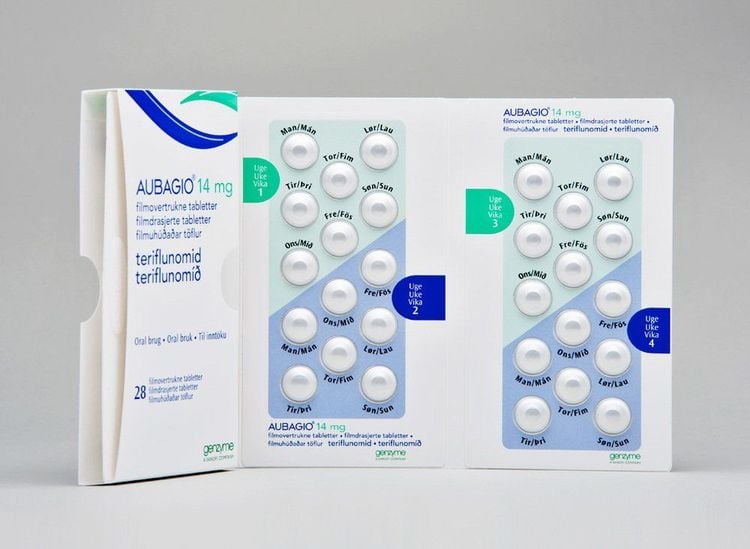
Sử dụng chung Paracetamol với Teriflunomide có thể ảnh hưởng đến gan
4. Serious danger when using antibiotics containing paracetamol
Paracetamol is a widely used antipyretic and analgesic drug, so in many cases of fever, after taking paracetamol, the fever does not stop immediately, so many people arbitrarily take more drugs containing acetaminophen, without knowing it. 2 drugs are essentially one. The use of the same drug will lead to overdose, very easy to be poisoned by paracetamol, causing liver cell necrosis and nephrotoxicity. Although Paracetamol is benign at therapeutic doses, when taken in excess, paracetamol will metabolize to create hepatotoxic substances, destroy liver cells leading to acute liver failure, yellow eyes, jaundice, blood clotting disorders, bleeding. , hepatic coma... even death. Therefore, to ensure safety, patients need to strictly follow the dosage recommended by the doctor or pharmacist.Please dial HOTLINE for more information or register for an appointment HERE. Download MyVinmec app to make appointments faster and to manage your bookings easily.
References: drugs.com, pubmed.ncbi.nlm.nih.gov



